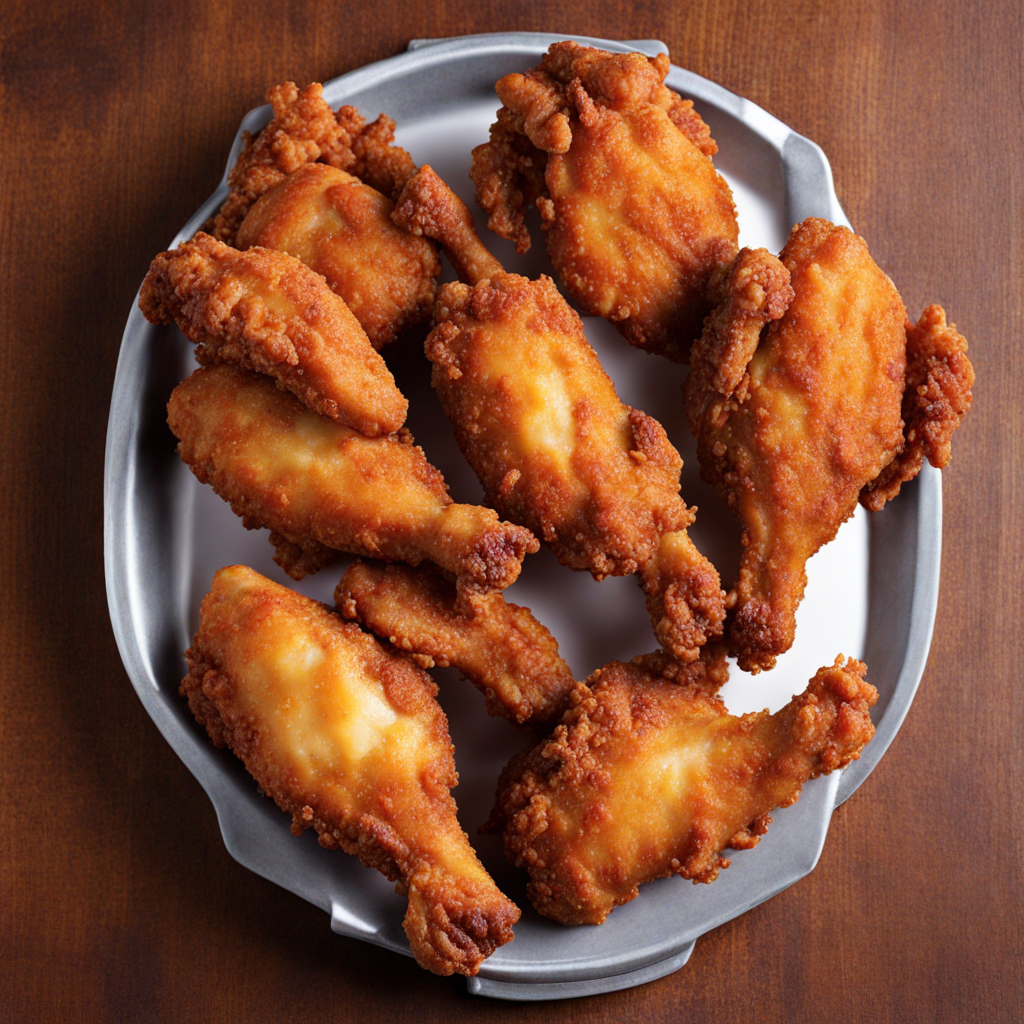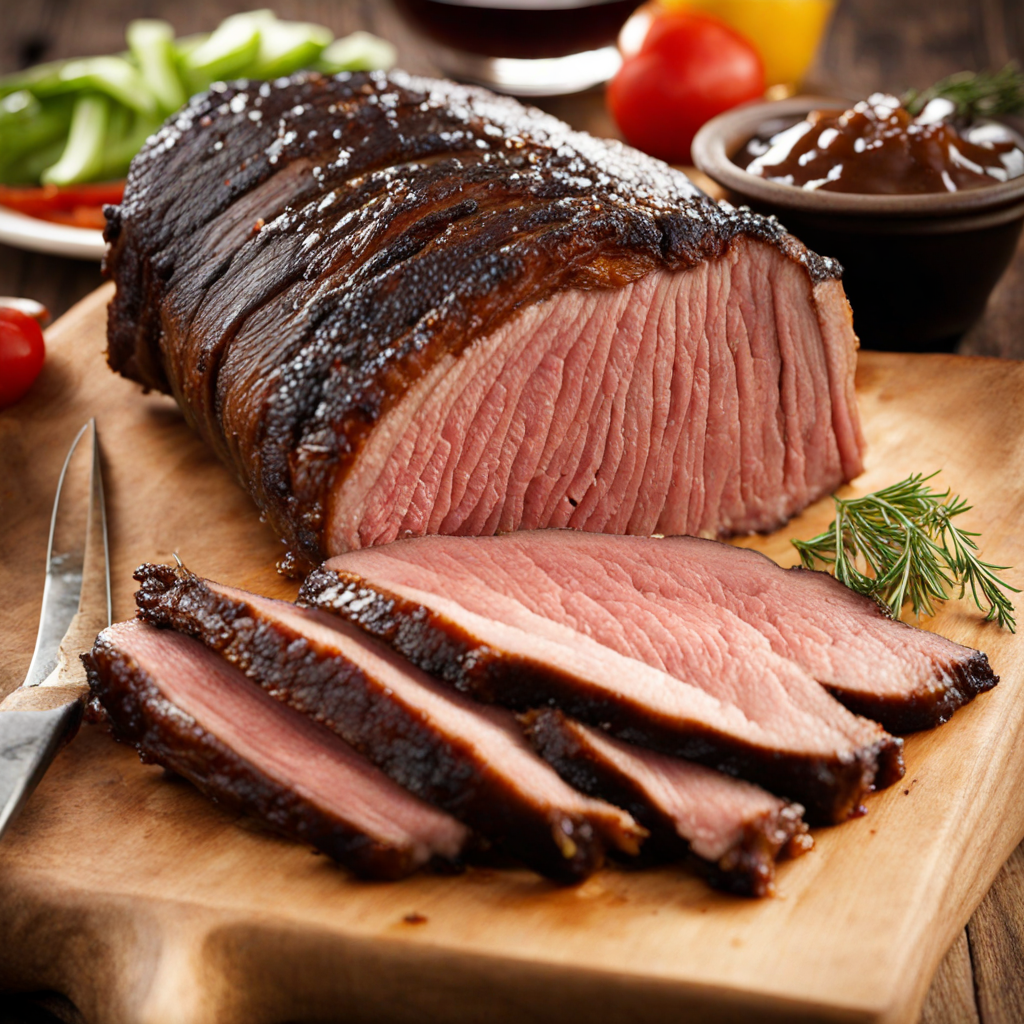Fried Chicken
Fried chicken is a beloved dish that embodies the heart and soul of Southern cuisine in the United States. This dish typically features chicken pieces that are marinated, seasoned, and then coated in a flavorful breading before being deep-fried to golden perfection. The marinade often includes buttermilk or a spiced brine, which tenderizes the meat and infuses it with moisture and flavor. The breading, often a mix of flour and cornstarch, can be enhanced with a variety of spices such as paprika, garlic powder, and cayenne pepper, giving it a distinctive kick that varies from one recipe to another. The frying process creates a delightful contrast between the crispy exterior and the juicy, succulent chicken inside. When served hot, the outer layer is crunchy and fragrant, while the meat remains tender and flavorful. The aroma of fried chicken can evoke nostalgic feelings, as it is often associated with family gatherings, picnics, and celebrations. Many enjoy it with traditional sides such as coleslaw, mashed potatoes, or cornbread, creating a satisfying meal that delights the senses. Fried chicken is not just a dish; it’s a cultural phenomenon that has evolved over time and has inspired countless variations across the country. From the classic Southern-style fried chicken to more contemporary interpretations that incorporate global flavors, there’s a fried chicken style for every palate. Whether enjoyed at a backyard barbecue, a soul food restaurant, or a trendy eatery, fried chicken remains a hearty and flavorful experience that continues to draw people together, making it a true American classic.
How It Became This Dish
The History of Fried Chicken in the United States: A Culinary Journey Fried chicken is more than just a beloved dish; it is a cultural icon in the United States, steeped in history and tradition. The dish, characterized by its crispy, golden crust and juicy interior, has roots that extend far beyond the borders of America, tracing back to various culinary practices around the world. Its journey into American kitchens is a fascinating tale of cultural exchange, adaptation, and regional pride. Origins: A Melting Pot of Influences The story of fried chicken begins long before it arrived in the United States. The practice of frying chicken can be traced back to medieval Europe, particularly in regions like Scotland, where the Scots had a tradition of frying meat in fat. Unlike their English counterparts, who typically boiled or roasted their poultry, Scots embraced the technique of frying, which would eventually influence Southern cooking. However, the dish as we know it today in America is a result of a confluence of cultures. With the arrival of enslaved Africans in the 17th century, their culinary traditions began to meld with European practices. Enslaved cooks brought with them a wealth of knowledge about seasonings, marinades, and cooking techniques. They often prepared fried chicken using their unique blend of spices, which added depth and flavor to the dish. The early American South became a melting pot of culinary influences, where African, British, and Native American traditions intertwined. The combination of European frying techniques and African flavor profiles laid the foundation for what would become a quintessential Southern dish. Cultural Significance: More Than Just a Meal Fried chicken holds a special place in American culture, particularly in the Southern states where it is often associated with comfort and hospitality. The dish transcends mere sustenance; it is a symbol of family gatherings, celebrations, and communal feasts. Fried chicken is often served during important events, from Sunday dinners to picnics and potlucks, embodying a sense of togetherness and home. In African American communities, fried chicken has deep cultural significance, serving as a reminder of resilience and creativity in the face of adversity. The dish became a staple in many households, often prepared as a way to bring families together. It is also frequently associated with the "soul food" tradition, which emphasizes comfort and nourishment, using ingredients that were historically accessible to Black communities. Fried chicken's role in African American culture is further highlighted in literature, music, and art. It has been celebrated in songs, poems, and stories, often serving as a metaphor for the richness of Black life and heritage. The act of frying chicken is sometimes viewed as a form of resistance against the erasure of cultural identity, allowing communities to maintain their traditions through food. Development Over Time: From Southern Staple to National Phenomenon As the United States expanded and evolved, so too did the popularity of fried chicken. The late 19th and early 20th centuries saw a rise in the dish's profile, especially as Southern cuisine began to gain national attention. Fried chicken became synonymous with Southern hospitality, often featured on menus in restaurants that sought to showcase authentic Southern fare. The advent of the automobile and the rise of road trips in the mid-20th century played a pivotal role in spreading the popularity of fried chicken beyond the South. Fast-food chains began to capitalize on this trend, introducing fried chicken as a convenient and portable meal option. Kentucky Fried Chicken (KFC), founded by Colonel Harland Sanders in 1952, became a household name, bringing the beloved dish to a national audience. Sanders' secret blend of eleven herbs and spices, alongside his emphasis on cooking the chicken fresh, allowed KFC to dominate the fast-food landscape, setting the stage for fried chicken's place in American cuisine. The latter half of the 20th century also saw the emergence of regional fried chicken variations. In the South, dishes like Nashville hot chicken gained popularity, characterized by its spicy, cayenne-infused batter. Meanwhile, in the Northeast and Midwest, fried chicken was often paired with biscuits and gravy, showcasing the diversity of interpretations across the country. The Modern Era: Revival and Reinvention In recent years, fried chicken has experienced a renaissance as chefs and food enthusiasts seek to elevate the dish beyond its fast-food origins. A growing interest in artisanal cooking and local sourcing has led to a resurgence in traditional frying techniques, with many restaurants focusing on quality ingredients and unique flavor profiles. The rise of the "fried chicken sandwich" in fast-casual dining and gourmet establishments has further popularized the dish, with variations appearing across the culinary landscape. Chefs are experimenting with global influences, incorporating different spices, marinades, and cooking methods. For example, Korean fried chicken, known for its double-frying technique that yields an incredibly crispy texture, has gained a devoted following, further illustrating the dish's adaptability. Fried chicken has also become a staple in food festivals and cultural events, where chefs showcase their unique takes on the dish. The celebration of fried chicken in various forms—from traditional Southern recipes to innovative fusion dishes—highlights its versatility and enduring appeal. Conclusion: A Culinary Legacy Fried chicken is more than just a dish; it is a celebration of history, culture, and community. Its journey from medieval Europe to the kitchens of America tells a story of resilience, adaptation, and unity. As fried chicken continues to evolve, it remains deeply rooted in American culture, embodying a sense of comfort and nostalgia that resonates with people of all backgrounds. Whether enjoyed at a family gathering, a local diner, or a trendy restaurant, fried chicken is a testament to the rich culinary heritage of the United States. It serves as a delicious reminder of the diverse influences that shape American cuisine and the power of food to bring people together. As we savor a piece of fried chicken, we partake in a legacy that spans centuries and connects us to the past, present, and future of American culinary tradition.
You may like
Discover local flavors from United States







